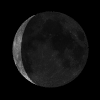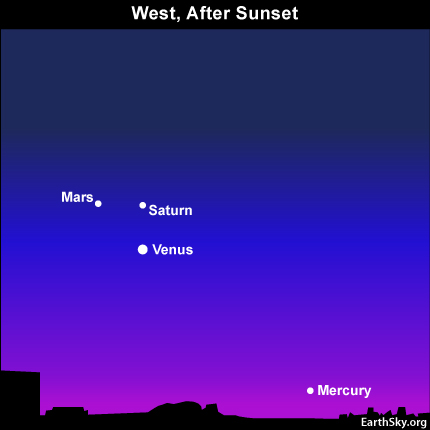Courtesy of EarthSky
A Clear Voice for Science
www.EarthSky.org

 Mercury, the innermost planet of the solar system, is not often visible in our sky because it is always near the sun. When this inner world does become visible, it appears but briefly in the evening after sunset – or in the morning before sunrise. At present Mercury shines as an evening “star.”
Mercury, the innermost planet of the solar system, is not often visible in our sky because it is always near the sun. When this inner world does become visible, it appears but briefly in the evening after sunset – or in the morning before sunrise. At present Mercury shines as an evening “star.”
Today, Mercury reaches its greatest elongation for the entire year: 27 degrees east of the sun. (Your fist at an arm length approximates 10 degrees.) Even so, the northern hemisphere has a backseat view of Mercury whereas the southern hemisphere enjoys a ringside seat.
At mid-northern latitudes – like those in the mainland United States – Mercury sets an hour or so after sunset. In fact, you will probably need binoculars to catch Mercury. Farther north – like in Alaska – Mercury sets at about the same time as the sun.
At mid-southern latitudes – like those in Australia – Mercury stays out for more than 2 hours after sundown. As far south as Antarctica, Mercury sets more than 4 hours after the sun.
Why the big difference between the two hemispheres? It is because Mercury sits to the side of the setting sun in our northern skies yet above the setting sun in the southern hemisphere.
Related:
Looking for a sky almanac? EarthSky recommends . . .
Written by Bruce McClure
Astronomy Picture of the Day from NASA/JPL
U.S. Naval Observator Astronomical Information center